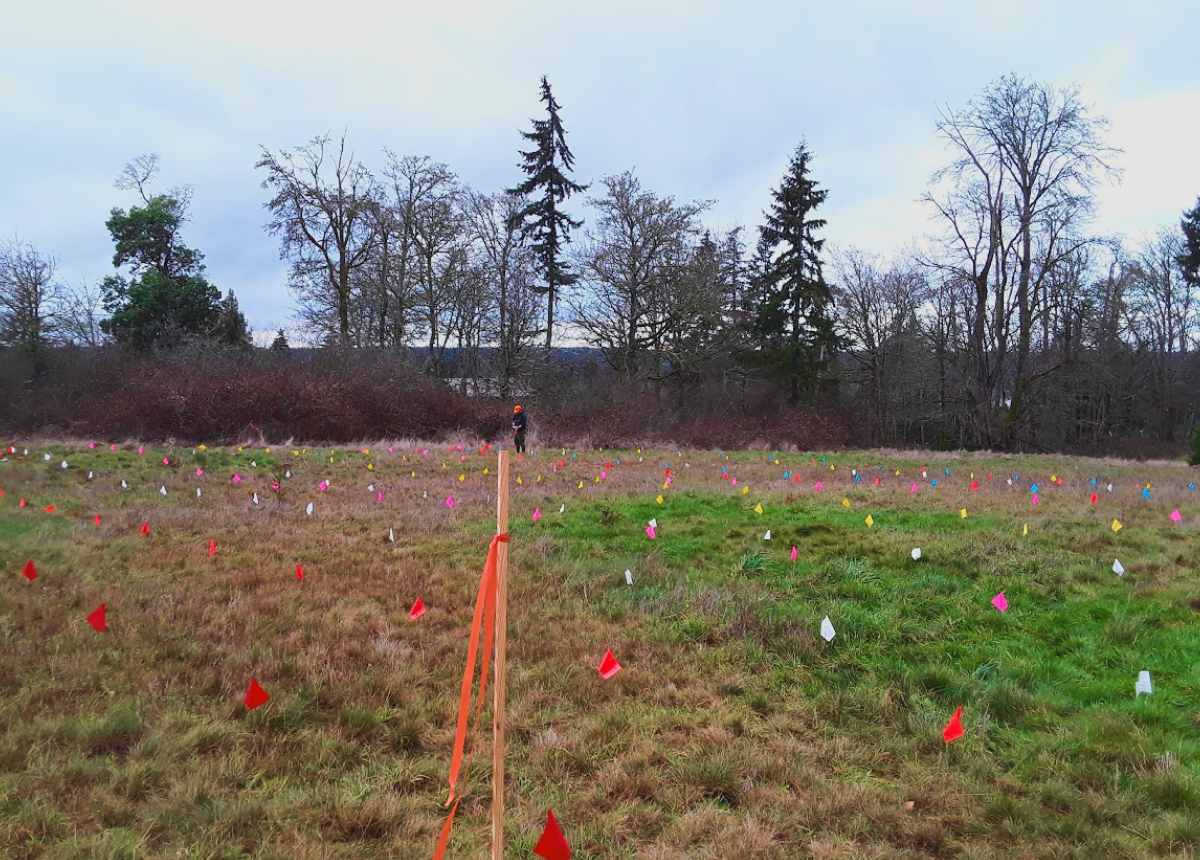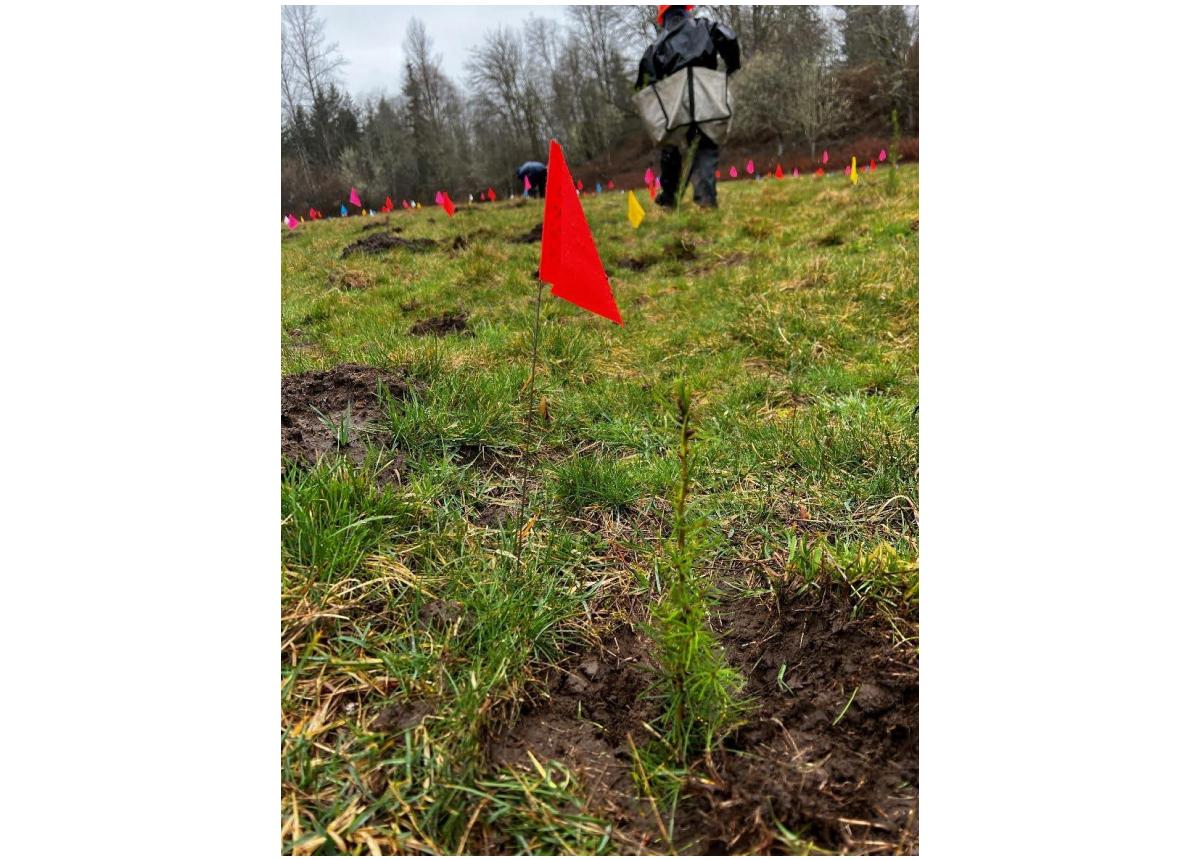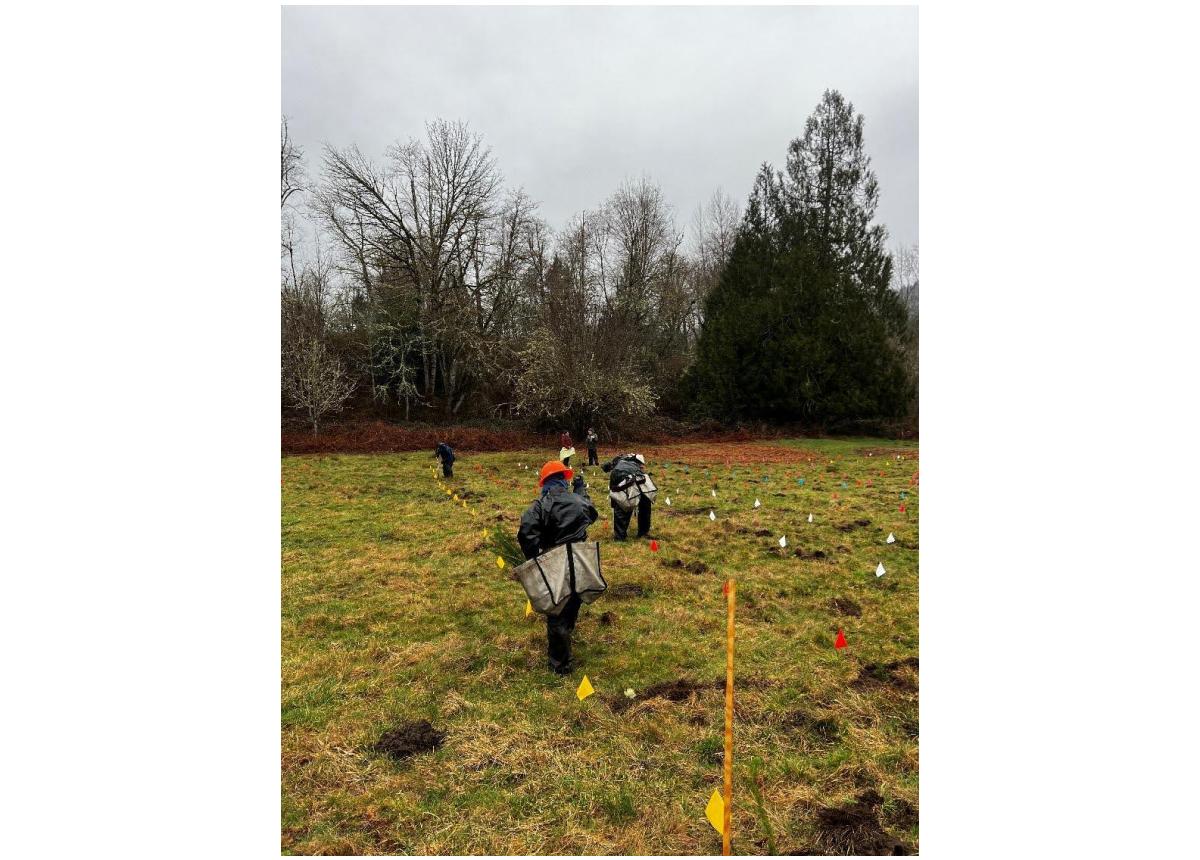Planting Forests of the Future with King County
Fri, July 11, 2025

There is an old proverb that says, “The best time to plant a tree was 20 years ago. The best next time is now.” This phrase carries a powerful message about action, timing, and long-term thinking. It reminds us that while the ideal time to begin adapting our forests for climate change may have been decades ago, the next best opportunity is today.
That’s exactly the philosophy behind King County’s Climate Adapted Seedlings Project, led by the Department of Natural Resources and Parks. This project is a field-scale pilot designed to test how a wide variety of tree seedlings, from both local and warmer, drier seed zones, perform under real-world conditions. The goal is to identify which seed sources are most likely to thrive as the climate changes, particularly in response to stressors like drought, heat, pests, and browsing pressure. Each of the four field sites is laid out in a standardized grid, allowing staff to track growth and survival over time. The project is not intended as a formal scientific study for academic publication, but rather as a practical, on-the-ground trial that will help guide King County’s future reforestation and restoration strategies.

Project Background
The Climate Adapted Seedlings Project draws inspiration from prior adaptive planting efforts in the region, particularly the Stossel Creek case study, which tested climate-adapted genotypes to improve forest resilience under future climate conditions. Building on this foundational work, King County's project aims to evaluate a broader set of species and seed sources across multiple ecological contexts.
What We Did
The Climate Adapted Seedlings Project involved installing a series of experimental plots across four different sites in King County. At each site, we established six rectangular planting plots, divided into two blocks of three. Each plot was laid out using a 6' x 6' grid, and seedlings were planted at each grid point to allow for adequate space and consistent monitoring.
Each seedling type was replicated 15 times per site, with a diverse mix of species and seed sources included in each layout. Color-coded pin flags and labeled wooden stakes were used to mark each planting location, clearly identifying the species, stock source, and layout orientation. These consistent, replicated layouts allow for effective monitoring of survival, growth, and resilience over time.
Where We Planted
Between February and March 2025, our team at Resilient supported King County with the layout and implementation of seedling plots at four sites:
- Maury Island
- Middle Issaquah
- Neely Bridge (Auburn)
- Taylor Mountain
Each site was planted between March 12-14 and includes a diverse mix of between 13 and 19 different seedling types, including Douglas-fir, grand fir, Sitka spruce, ponderosa pine, western hemlock, and western redcedar. These seedlings were sourced from a combination of local nurseries and public and private suppliers in California, Oregon, and Washington. The stock reflects a range of seed zones, from current local climates to those expected in future conditions, to test adaptability across a spectrum of environmental origins. Seedlings were planted in replicated, color-coded grids to support consistent layout, monitoring, and evaluation.

Why Climate Adaptation Matters
Forests in Washington are already feeling the effects of climate change. Drier summers, more intense heat, and rising pest and disease pressures are stressing native trees, particularly young seedlings. Traditional reforestation practices, which rely on local seed sources, may no longer be sufficient to ensure long-term forest health.
To address this, King County is testing an approach inspired by assisted migration, introducing seedling stock from areas that currently experience the warmer, drier conditions predicted for our region in the coming decades. By blending local genotypes with stock from places like California and Oregon, the County hopes to identify seed sources that will not only survive but thrive in a changing climate.
What’s Next
These seedling plots function as a living, landscape-scale pilot project. Over the coming years, King County and its partners will monitor seedling survival, growth, and responses to key climate-related stressors such as drought, browsing, and competition from surrounding vegetation.
Rather than generating academic publications, the data collected will be used to guide operational decisions. The goal is to understand which seed sources show the most promise across a variety of site conditions. This practical knowledge will support more climate-resilient reforestation and restoration strategies across the region.
A Regional First
This is one of the first large-scale efforts in the Pacific Northwest to test such a broad range of seedling genotypes side-by-side under real-world conditions. Building on earlier pilot projects like the Stossel Creek case study, this project expands the scope by including more species, more seed zones, and more diverse planting environments. As featured in The Seattle Times and KING 5 News, King County’s effort is setting a powerful precedent for climate-informed forestry practices that could help shape the future of reforestation across the West.
Learn More
To read King County’s official announcement and learn more about the broader goals of this work, check out their blog post: Climate-resilient trees for a changing future.
